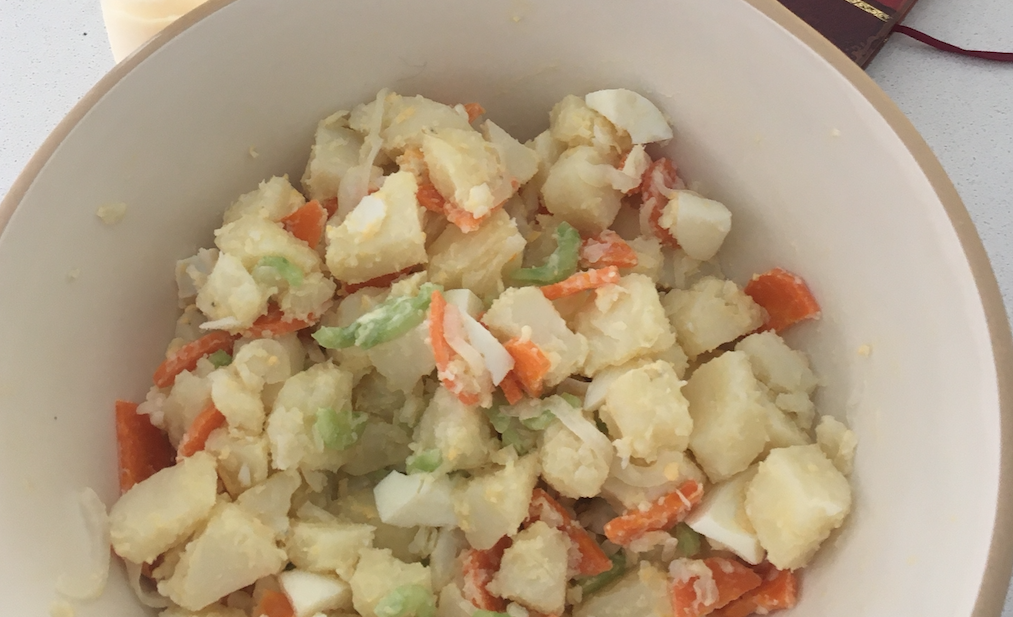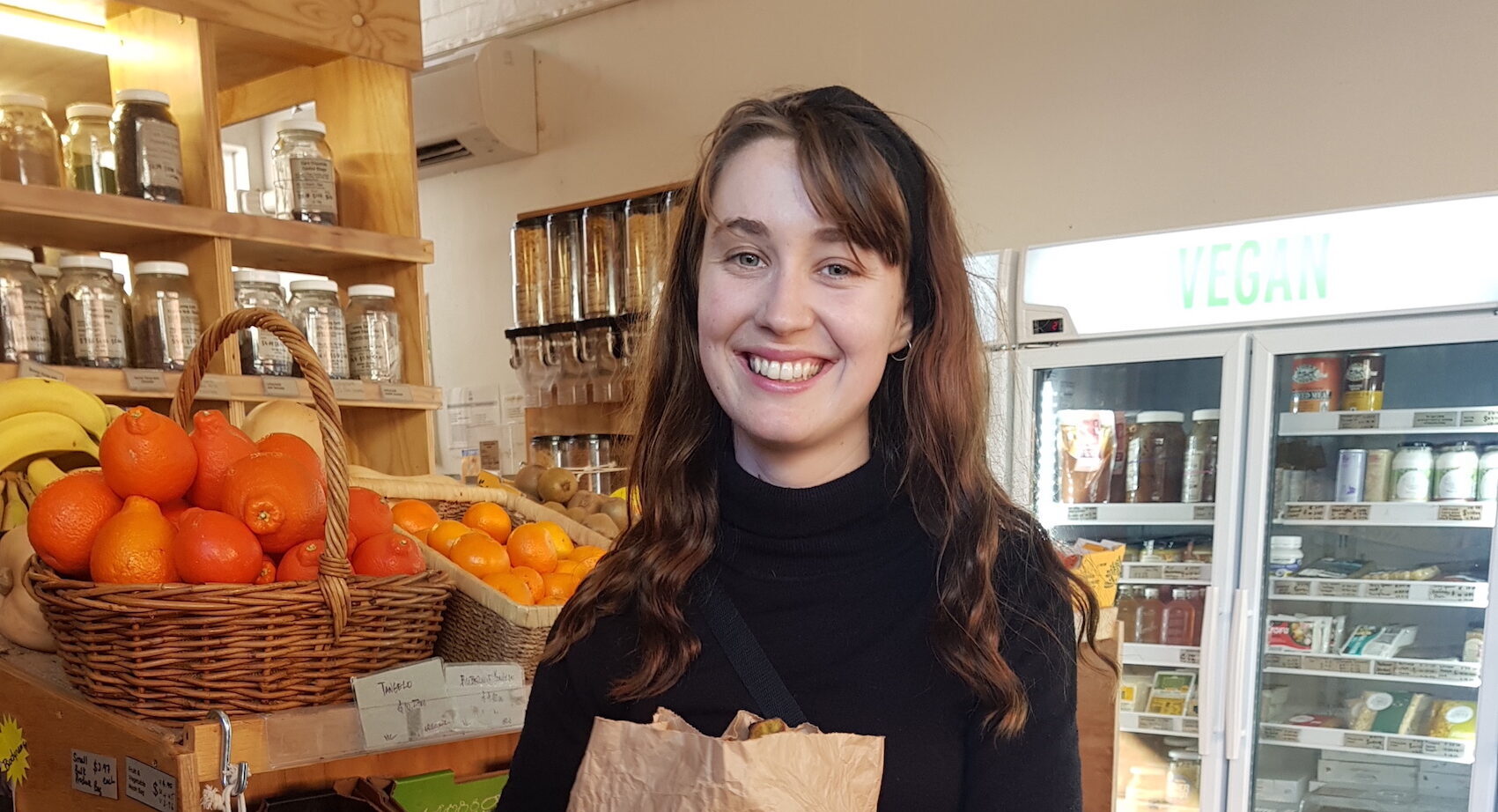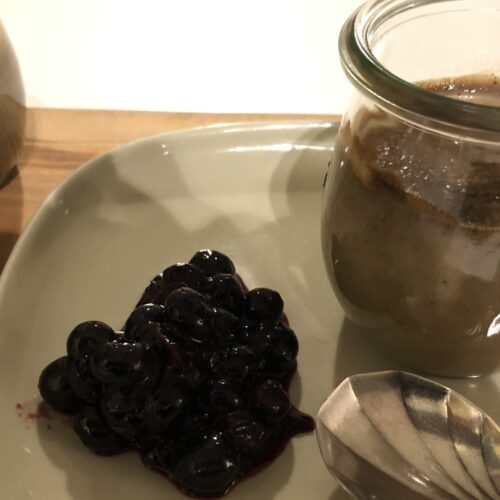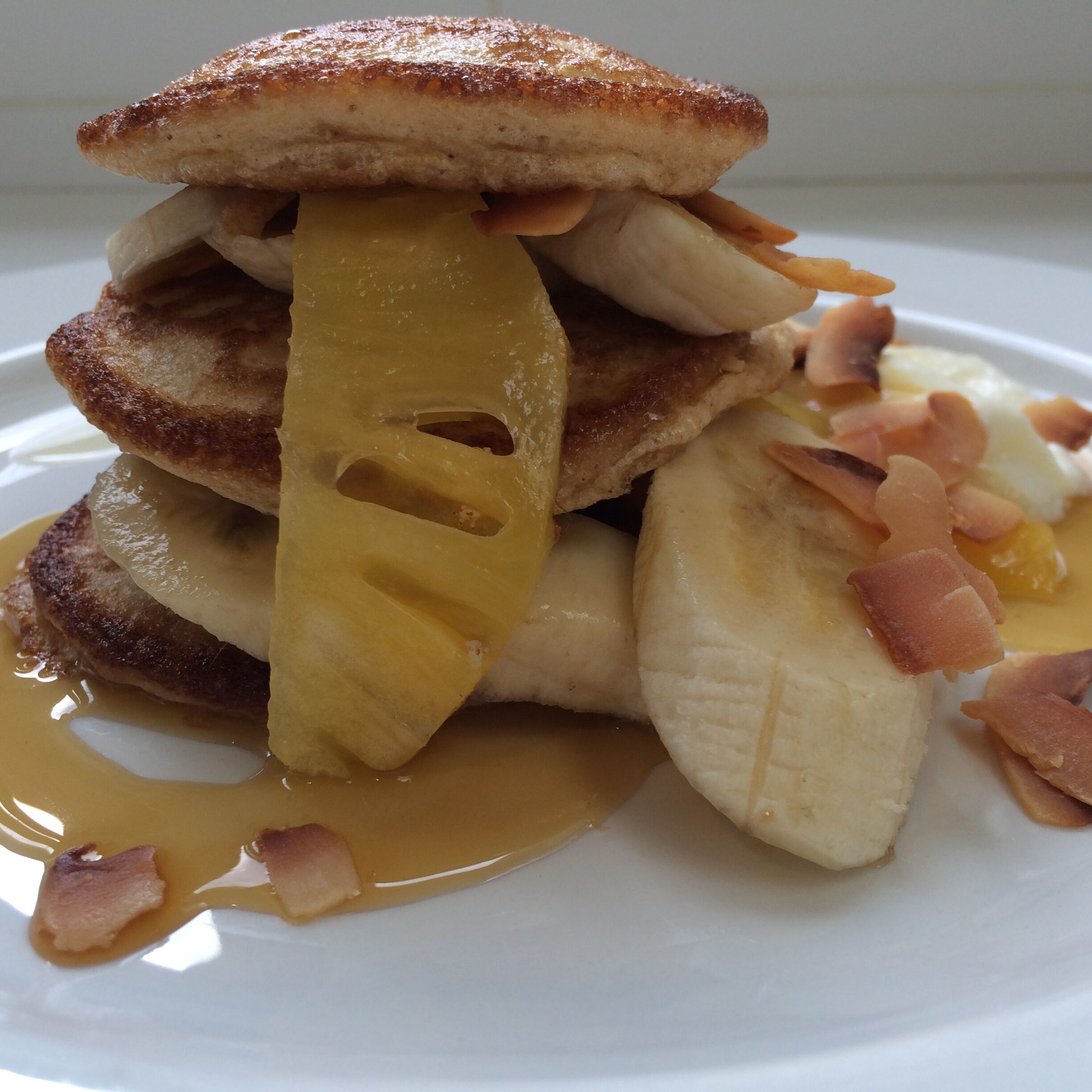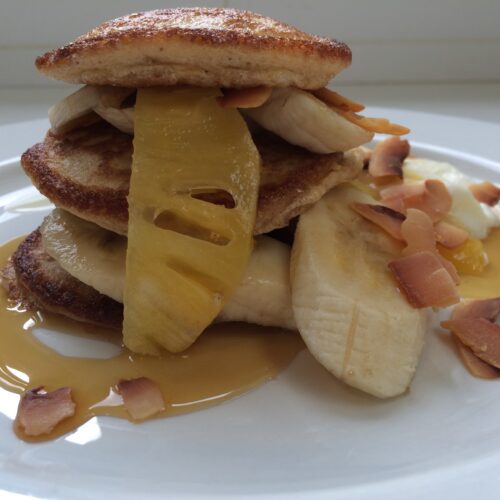I grew up eating potatoes every single day – my parents were Irish. Potato salad is one of my favourite things to eat. This is a Japanese style potato salad that I found a couple of years ago. I made it for Christmas the first time. This potato salad recipe does take a little time, so I like to listen to a podcast or an interview while I’m preparing this one – Ingrid, Alfalfa House Member

A Note on Potato Varieties
Potatoes are normally waxy or floury in texture. The waxy potatoes hold their shape when cooked . They are great in a potato salad recipe. Or maybe just boiled and cubed , then served with butter and chopped herbs. Floury potatoes on the other hand, don’t hold their shape so well once cooked and are soft and fluffy. They are ideal for mashed and baked potatoes.
For most home cooks , potatoes are a pantry staple. Use them in stocks and stews, or bake and mash the potatoes in hearty casseroles and pot pies. In Australia, we have a wide variety of potatoes to choose from. And best of all Alfalfa House stocks many of these potatoes when in season (and even some heirloom varieties that we source direct from farmers)
Further Reading on Choosing Potatoes
This link talks about different types of potatoes and when to use them
And here is A guide to every type of potato
How to choose the the right potato for your next meal
Starchy, Waxy, and All-Purpose: Potato Types, Explained
Japanese style Potato Salad
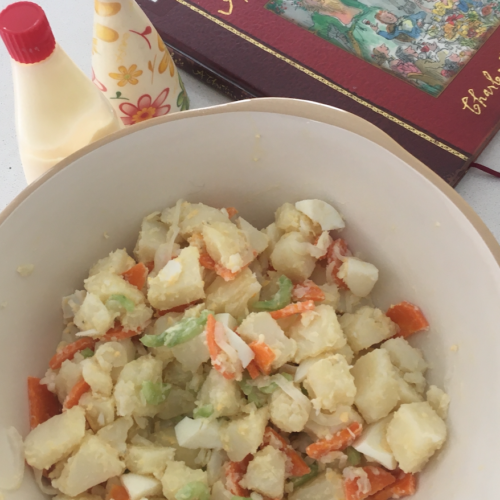
An Easy potato salad recipe. Excellent as a side dish accompanied with grilled or BBQ food
- 1 small Lebanese cucumber ( peeled in intervals, deseeded and thinly sliced)
- 1 small purple onion (thinly sliced)
- 2 medium eggs
- 1 kg Kipfler potatoes (or any other potatoes of your choice)
- 1 medium carrot (peeled and cut into thin half moons)
- 1 tbsp rice wine vinegar (or white wine vinegar)
- 1 cup Kewpie mayonnaise (I like the flavour of this mayonnaise. You can substitute any other mayonnaise of your choice.)
- 1 tsp salt
- 1/2 tsp black pepper
Toss the cucumber and onion in a little salt and drain for 15 mins.
Rinse off the salt and dry on paper towel.
Bring small saucepan of water to boil and hard boil eggs – maybe 6 – 8 minutes
Transfer eggs into iced water and tap the shells all over while in the water – this makes it much easier to peel the eggs.Peel and roughly chop
Cook sliced carrots in boiling water for 3-4 mins, cooked and not mushy.
Cook potatoes and peel while hot. Roughly chop and mash, season with salt – or not.
While potatoes are still warm – not steaming hot – add the vinegar, half the mayonnaise, cucumber, onion, carrot and eggs and mix together.
Taste and adjust seasoning if needed and add more mayonnaise if required. I personally use less than a cup of Kewpie.

